Europe Optical Imaging Market Size
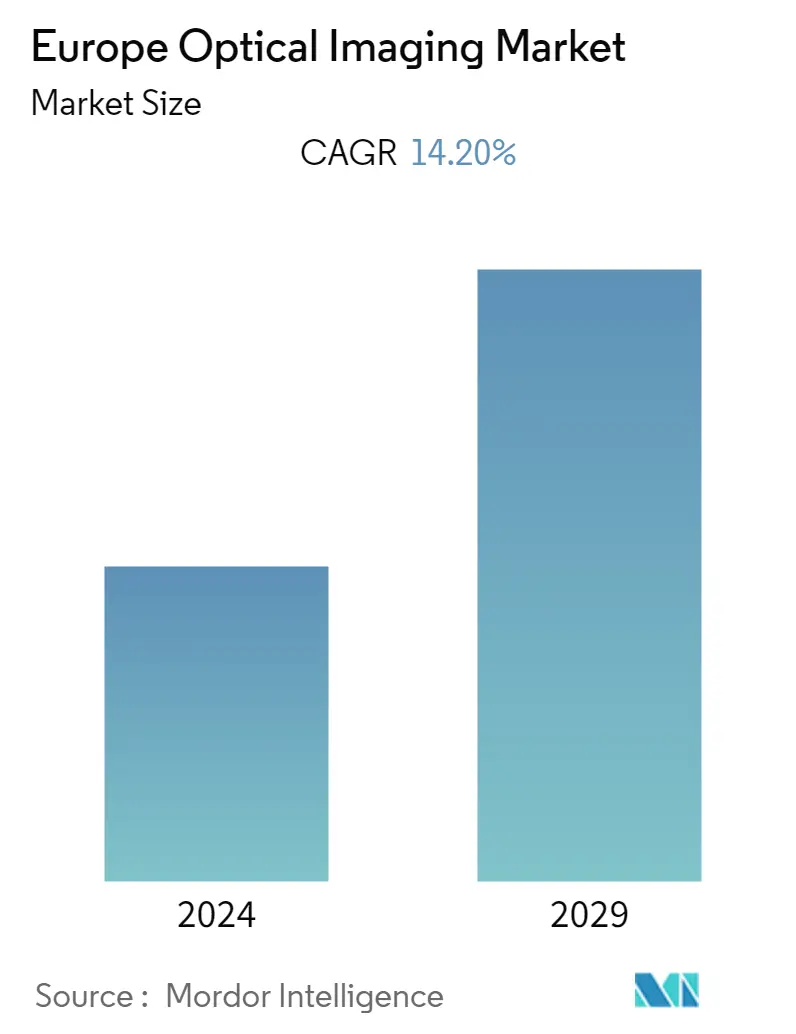
| Study Period | 2019 - 2029 |
| Base Year For Estimation | 2023 |
| Forecast Data Period | 2024 - 2029 |
| Historical Data Period | 2019 - 2022 |
| CAGR | 14.20 % |
| Market Concentration | Medium |
Major Players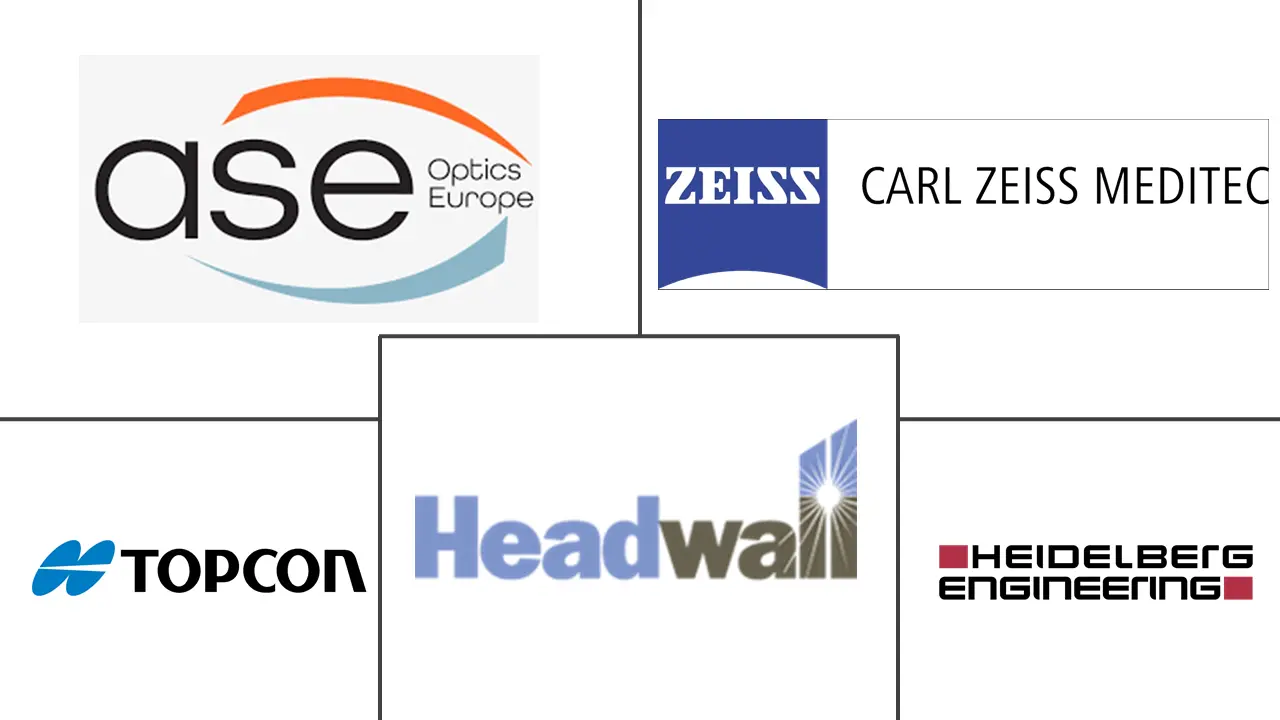
*Disclaimer: Major Players sorted in no particular order |
Europe Optical Imaging Market Analysis
Europe Optical Imaging Market is expected to register a CAGR of 14.2% during the forecast period (2021-2026). The growing prevalence of eye disorders, increased focus on medical device research and development, adoption of modern healthcare technologies, and an increasing aging population contribute to the growth of the optical imaging market.
- The increasing trend of collaborations and partnerships between companies in the region to leverage their technical expertise and manufacturing infrastructure to innovate sophisticated products is expected to drive the market.
- For instance, in November 2021, OmniVision Technologies Inc., a developer of advanced digital imaging solutions, and Diaspective Vision GmbH, developer of high-quality hyperspectral and multispectral camera systems for medical applications, partnered to develop an advanced endoscopic camera, the Malyna system, which is based on proprietary multispectral imaging technology. Malyna delivers indocyanine green (ICG) based perfusion visualization and acts as a platform to adapt further algorithms for quantified perfusion and tissue categorization without the necessity of color agent injection. The system augments a 4K live video stream with physiological information to provide surgeons with objective decision-making support.
- Further, GE Healthcare and Affidea, a pan-European company operating in advanced diagnostic imaging, outpatient, and cancer care services, signed a multi-year agreement to deploy imaging and digital technologies across the Affidea network. GE Healthcare will install over 200 pieces of new equipment in Affidea's network of centers across Europe. The agreement includes the provision of 60 new MRIs, 50 ultrasound devices, 40 CT scanners, and 30 X-rays machines by 2022.
- However, hefty instrument costs, stringent regulatory approval procedures, a scarcity of qualified operators, and insufficient reimbursements for optical imaging procedures restrain the growth of the studied market. Further, due to the COVID-19 pandemic, many imaging and diagnostic departments have experienced a rapid decline in optical imaging case volumes due to the increased need for social distancing among patients, physicians, and other healthcare professionals.
- Additionally, the prevalence of alternative technologies like Raster scan optoacoustic mesoscopy (RSOM), an imaging technology developed as part of the EU-funded INNODERM project, makes it possible to capture detailed vascular and cellular structures under the skin surface and precisely analyze changes of the skin, which isn't possible with optical imaging as it doesn't provide sufficient contrast or depth penetration to obtain comparable information, could act as a market restraint.
Europe Optical Imaging Market Trends
This section covers the major market trends shaping the Europe Optical Imaging Market according to our research experts:
Ophthalmology Segment is Expected to Hold a Major Market Share
- The rising popularity of Optical Coherence Tomography, a non-invasive imaging technology used to obtain high-resolution cross-sectional images of the retina, and the growing prevalence of eye disorders, owing to the rising global geriatric population, is expected to aid the growth of the studied market.
- According to the Office for National Statistics (UK), there will be approximately 25.1 thousand ophthalmic opticians in employment in the United Kingdom (UK) in 2021, and the number is expected to rise in the near future. This can be attributed to the growing ophthalmic concerns in the region.
- Further, the construction of portable, handheld, Optical coherence tomography (OCT) devices could increase the ease of access and expand OCT into settings where use is currently prohibited by its cost and size. For instance, Envisu C2300 OCT, a handheld OCT solution intended to aid in the diagnosis of physiological and pathologic conditions of the eye, was developed by Leica Microsystems, Germany. It features full 3D volumetric data capturing capability with completely customizable high-density data scans up to 1000 x 1000 and is suitable for even premature infants.
- Also, the ophthalmic industry is witnessing an increasing integration of AI into diagnostic techniques. Artificial intelligence (AI), inspired by the human multilayered neuronal system, has shown significant improvements within some visual and auditory recognition tasks. AI can examine digital data in various tasks comprehensively, quickly, and non-invasive manner.
- The Europen region is witnessing AI-centric collaborations of companies to advance Ophthalmology research. For instance, in December 2020, RetinAI announced a multi-year collaboration with Novartis Pharma to deploy RetinAI’s IT solutions and artificial intelligence tools to support multiple projects in ophthalmology and digital health. The first initiative would fund a multi-center international clinical study including patients suffering from neovascular age-related macular degeneration (nAMD). The study is devised to investigate the influence of optical coherence tomography (OCT) image solutions using Artificial Intelligence (AI) on the assessment of disease activity. The study would be conducted in several clinical centers in numerous European countries and Canada, involving more than 500 patients.
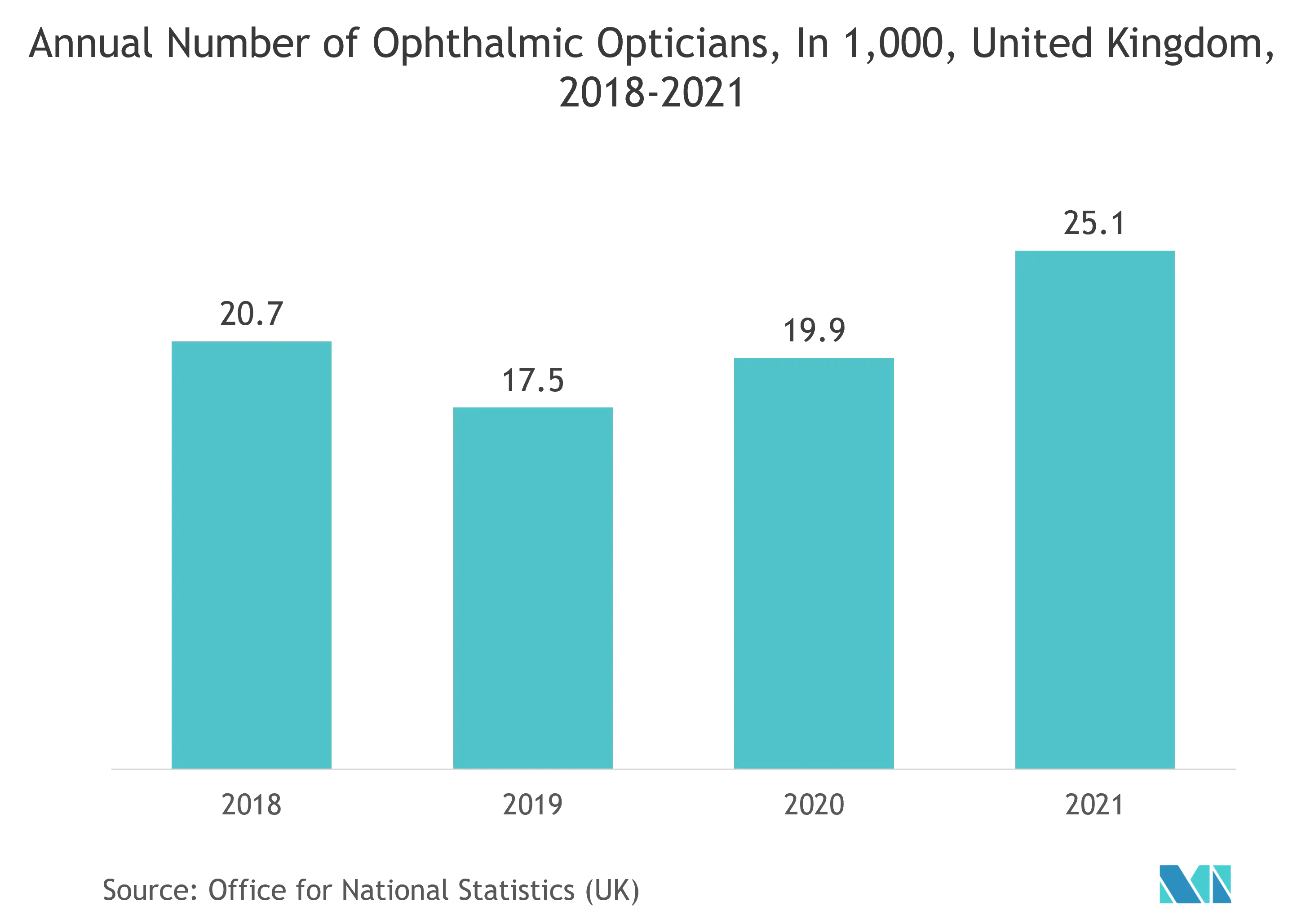
Optical Imaging in Oncology is Expected to Witness Significant Growth
- Head and neck cancers have become a severe threat to human health nowadays. While surgery remains the first-line choice for head and neck cancer patients, the limited resectable tissue mass and complex anatomy structures in the head and neck region put the surgeons in a dilemma between extensive resection and a better quality of life for the patients because, if too much is removed, it might negatively impact the patient’s quality of life, and if too little is removed, cancer would likely reoccur.
- Early diagnosis and treatment of the pre-malignancies, and real-time in vivo detection of surgical margins during en bloc resection, could be leveraged to minimize the resection of normal tissues.
- Recent advancements in optical hardware and reagents have created new prospects for real-time pre-malignancy and cancer imaging in the clinic or operating room. Optical imaging in the head and neck has been reported using autofluorescence imaging, targeted fluorescence imaging, high-resolution microendoscopy, narrow-band imaging, and Raman spectroscopy.
- Further, a European research team based across Germany, the UK, Denmark, Ireland, and Austria is developing a new optical imaging platform that uses harmless light beams to spot the tell-tale signs of colon cancer at an incredibly early stage. Instead of inserting a typical camera into the intestine and then performing surgery to remove a growth for examination and analysis, this novel optical imaging approach can help clinicians avoid unnecessary invasive biopsy by enabling them to view the tissue in much greater detail.
- Calling themselves PROSCOPE, the consortium targets to save up to half of the 160,000 lives lost annually in Europe to CRC. The PROSCOPE project, which would conclude in 2024, would perform subsequent trials in clinics at the Medical University of Vienna. The four-year PROSCOPE project received a grant of EUR 5,999,383.75 from Horizon 2020 under the Research and Innovation action funding schemes. Initiatives like the PROSCOPE, which aim to innovate non-invasive procedures for the early detection of cancer, are expected to drive the studied market in the European region.
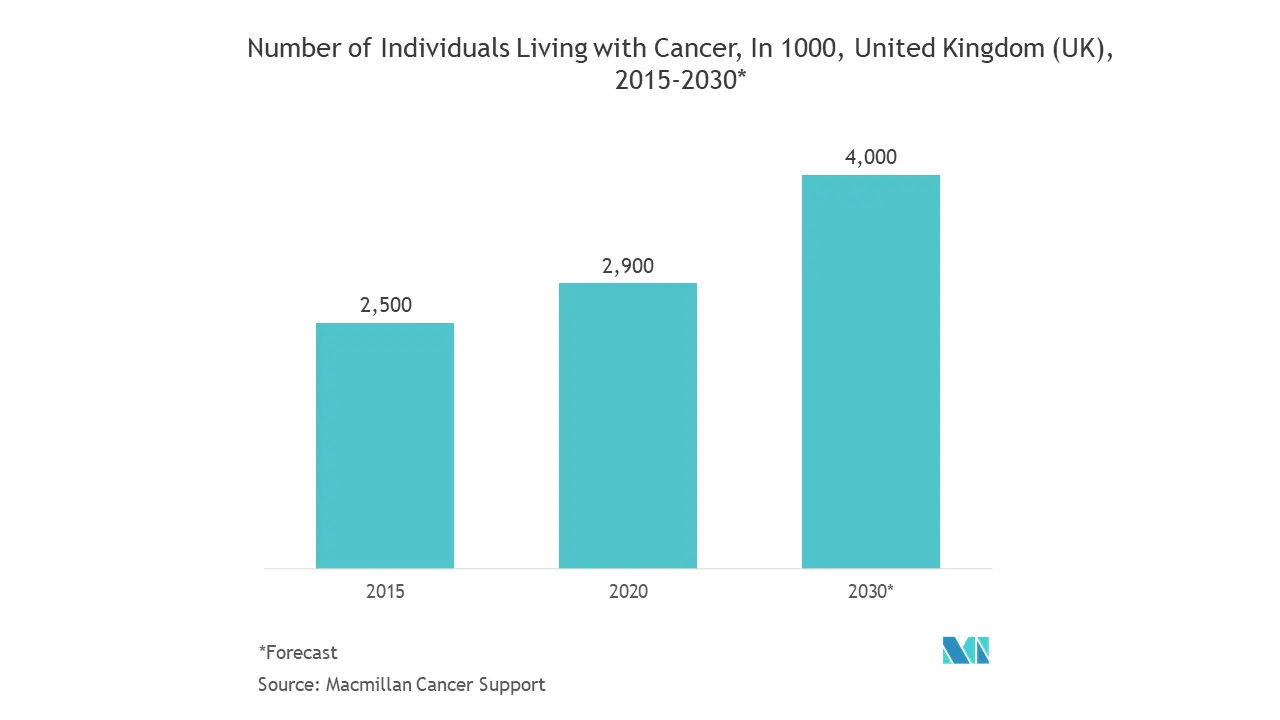
Europe Optical Imaging Industry Overview
The Europe Optical Imaging Market is moderately fragmented with the presence of prominent players like ASE Optics, Inc., Carl Zeiss Meditec AG, Cytoviva Inc., Heidelberg Engineering Inc., etc. The companies must leverage their industry experience and technological capabilities to innovate advanced products that cater to complex issues to diversify their customer base and capture a wider geographic area.
- February 2021 - Heidelberg Engineering Academy launches CET Course Room, a free virtual platform that would enable optometrists and dispensing opticians to earn CET points through engaging with recorded webinars.
Europe Optical Imaging Market Leaders
-
ASE Optics, Inc.
-
Carl Zeiss Meditec AG
-
Headwall Photonics Inc.
-
Topcon Corporation
-
Heidelberg Engineering Inc.
*Disclaimer: Major Players sorted in no particular order
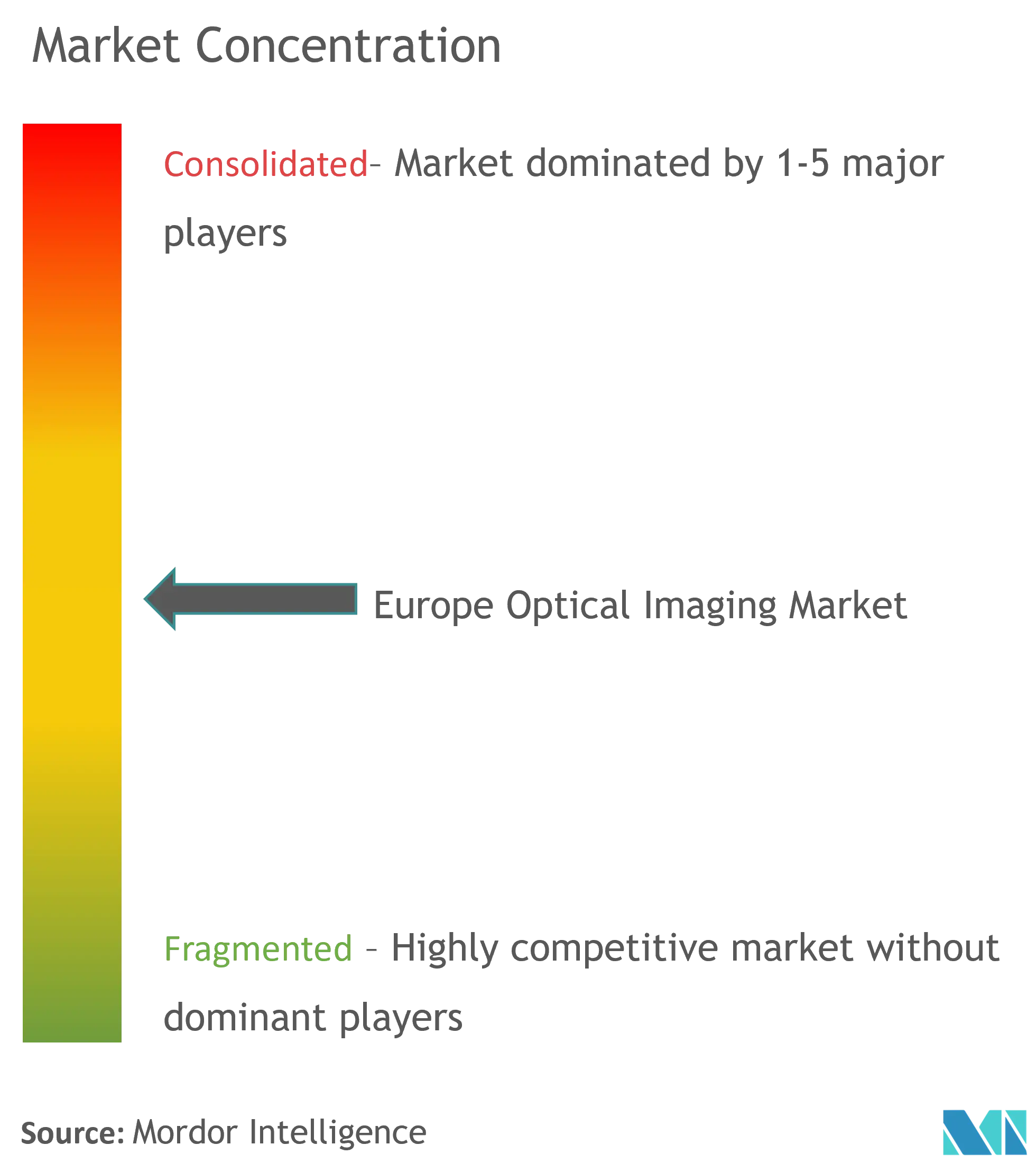
Europe Optical Imaging Market Report - Table of Contents
-
1. INTRODUCTION
-
1.1 Study Assumptions and Market Definition
-
1.2 Scope of the Study
-
-
2. RESEARCH METHODOLOGY
-
3. EXECUTIVE SUMMARY
-
4. MARKET INSIGHTS
-
4.1 Market Overview
-
4.2 Industry Attractiveness - Porter's Five Forces Analysis
-
4.2.1 Bargaining Power of Suppliers
-
4.2.2 Bargaining Power of Consumers
-
4.2.3 Threat of New Entrants
-
4.2.4 Threat of Substitute Products
-
4.2.5 Intensity of Competitive Rivalry
-
-
4.3 Technology Snapshot
-
4.4 Assessment of the Impact of COVID-19 on the Market
-
-
5. MARKET DYNAMICS
-
5.1 Market Drivers
-
5.1.1 Rising Demand for ophthalmology
-
5.1.2 Advancements in technology
-
-
5.2 Market Restraints
-
5.2.1 High Initial cost of the equipment
-
-
-
6. MARKET SEGMENTATION
-
6.1 By Technology
-
6.1.1 Photoacoustic Tomography
-
6.1.2 Optical Coherence Tomography
-
6.1.3 Hyperspectral Imaging
-
6.1.4 Near-Infrared Spectroscopy
-
6.1.5 Others
-
-
6.2 By Product
-
6.2.1 Imaging Systems
-
6.2.2 Illumination Systems
-
6.2.3 Optical Imaging Software
-
6.2.4 Cameras
-
6.2.5 Others
-
-
6.3 By Application Areas
-
6.3.1 Ophthalmology
-
6.3.2 Oncology
-
6.3.3 Cardiology
-
6.3.4 Dermatology
-
6.3.5 Neurology
-
6.3.6 Others
-
-
6.4 By Application
-
6.4.1 Pathological Imaging
-
6.4.2 Intraoperative Imaging
-
-
6.5 By End-User Industry
-
6.5.1 Hospitals and Clinics
-
6.5.2 Research and Diagnostic Laboratories
-
6.5.3 Pharmaceutical Industry
-
6.5.4 Biotechnology Companies
-
6.5.5 Others
-
-
6.6 By Country
-
6.6.1 United Kingdom
-
6.6.2 Germany
-
6.6.3 France
-
6.6.4 Italy
-
6.6.5 Others
-
-
-
7. COMPETITIVE LANDSCAPE
-
7.1 Company Profiles
-
7.1.1 ASE Optics, Inc.
-
7.1.2 Bioptigen Inc.
-
7.1.3 Carl Zeiss Meditec AG
-
7.1.4 ChemImage Corporation
-
7.1.5 Headwall Photonics Inc.
-
7.1.6 Cytoviva Inc.
-
7.1.7 Topcon Corporation
-
7.1.8 Heidelberg Engineering Inc.
-
7.1.9 Canon Inc.
-
7.1.10 Agfa-Gevaert NV
-
7.1.11 Optovue Inc.
-
7.1.12 Perkinelmer, Inc.
-
- *List Not Exhaustive
-
-
8. INVESTMENT ANALYSIS
-
9. FUTURE OUTLOOK
Europe Optical Imaging Industry Segmentation
The Europe Optical Imaging Market is segmented by Technology (Photoacoustic Tomography, Optical Coherence Tomography, Hyperspectral Imaging, Near-Infrared Spectroscopy), Product (Imaging Systems, Illumination Systems, Optical Imaging Software, Optical Imaging Software), Application Areas (Ophthalmology, Oncology, Cardiology, Dermatology, Neurology), Application (Pathological Imaging, Intraoperative Imaging), End-User Industry (Hospitals & Clinics, Research & Diagnostic Laboratories, Pharmaceutical Industry, Biotechnology Companies), and Country.
Optical imaging is a technique that employs light and photon properties to create detailed images of organs, tissues, cells, and even molecules. The procedures provide non-invasive or slightly invasive ways to view within a body. It is used in optical microscopy, spectroscopy, endoscopy, scanning laser ophthalmoscopy, laser Doppler imaging, optical coherence tomography, etc.
| By Technology | |
| Photoacoustic Tomography | |
| Optical Coherence Tomography | |
| Hyperspectral Imaging | |
| Near-Infrared Spectroscopy | |
| Others |
| By Product | |
| Imaging Systems | |
| Illumination Systems | |
| Optical Imaging Software | |
| Cameras | |
| Others |
| By Application Areas | |
| Ophthalmology | |
| Oncology | |
| Cardiology | |
| Dermatology | |
| Neurology | |
| Others |
| By Application | |
| Pathological Imaging | |
| Intraoperative Imaging |
| By End-User Industry | |
| Hospitals and Clinics | |
| Research and Diagnostic Laboratories | |
| Pharmaceutical Industry | |
| Biotechnology Companies | |
| Others |
| By Country | |
| United Kingdom | |
| Germany | |
| France | |
| Italy | |
| Others |
Europe Optical Imaging Market Research FAQs
What is the current Europe Optical Imaging Market size?
The Europe Optical Imaging Market is projected to register a CAGR of 14.20% during the forecast period (2024-2029)
Who are the key players in Europe Optical Imaging Market?
ASE Optics, Inc., Carl Zeiss Meditec AG, Headwall Photonics Inc., Topcon Corporation and Heidelberg Engineering Inc. are the major companies operating in the Europe Optical Imaging Market.
What years does this Europe Optical Imaging Market cover?
The report covers the Europe Optical Imaging Market historical market size for years: 2019, 2020, 2021, 2022 and 2023. The report also forecasts the Europe Optical Imaging Market size for years: 2024, 2025, 2026, 2027, 2028 and 2029.
Europe Optical Imaging Industry Report
Statistics for the 2024 Europe Optical Imaging market share, size and revenue growth rate, created by Mordor Intelligence™ Industry Reports. Europe Optical Imaging analysis includes a market forecast outlook to 2029 and historical overview. Get a sample of this industry analysis as a free report PDF download.



